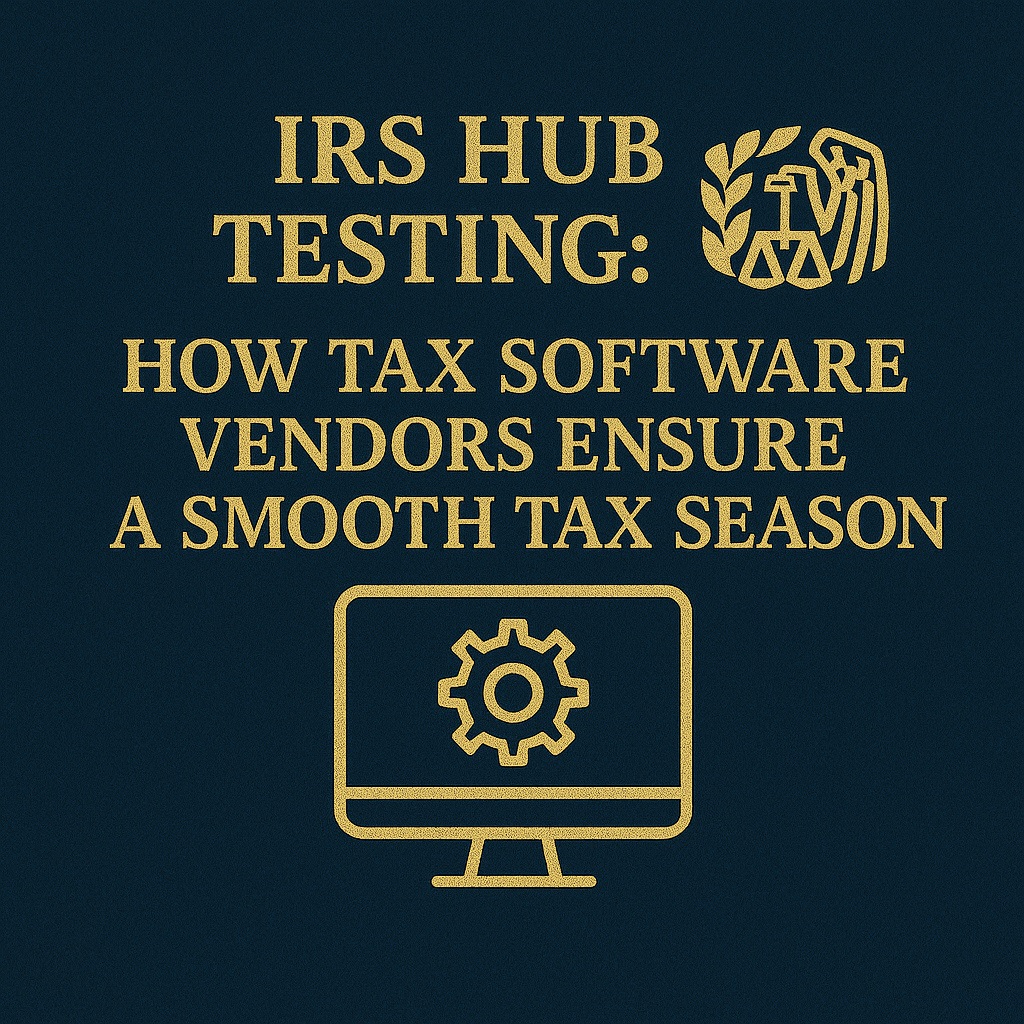Ever wondered how the IRS ensures its e-filing system is ready for the tax season rush? The secret lies in IRS HUB Testing, a critical pre-season phase where tax software vendors and electronic filing providers team up with the IRS to test the system. Starting January 16, 2025, for the 2025 tax season, this controlled launch helps fine-tune the IRS’s e-filing infrastructure before the official opening on January 27, 2025. In this engaging guide, we’ll explore which vendors participate, how they use HUB Testing, and why it’s a game-changer for a smooth tax season. Let’s get started!

What Is IRS HUB Testing and Who’s Involved?
IRS HUB Testing is a controlled launch where the IRS tests its e-filing system by processing a limited number of tax returns. It’s all about ensuring system readiness, and tax software vendors play a starring role:
- Key Players: The IRS partners with professional tax software developers, tax preparer service bureaus, and electronic filing providers.
- Notable Vendors: Companies like MyTAXPrepOffice publicly announce their participation, alongside major players like Drake Software, TaxSlayer Pro, and other professional-grade software providers.
- What They Do: These vendors submit test batches of returns to verify their software works seamlessly with the IRS’s e-file system.
- Annual Changes: The list of participants varies yearly, and while not all vendors are publicly disclosed, those passing IRS assurance testing are key to the process.
How Do Vendors Use IRS HUB Testing?
Tax software vendors are the backbone of HUB Testing, ensuring their systems sync perfectly with the IRS. Here’s how it works:
- Submitting Test Returns: Vendors send batches of electronic returns during the HUB Testing window (e.g., January 16–27, 2025, for 2025).
- System Compatibility: These submissions confirm that the vendor’s software formats returns correctly and integrates with the IRS’s e-filing infrastructure.
- Random Processing: The IRS randomly selects some returns for immediate processing, issuing acknowledgments (acceptance or rejection notices). Others stay queued until the official e-filing start on January 27, 2025.
- Error Detection: Testing identifies glitches, like formatting issues or transmission errors, so vendors and the IRS can fix them before the season begins.
Why Does HUB Testing Matter for Taxpayers?
HUB Testing isn’t just a tech rehearsal—it sets the stage for a smoother tax season. Here’s why it benefits you:
- Prevents System Crashes: Testing ensures the IRS e-filing system can handle millions of returns without glitches.
- Faster Processing: A stable system means quicker return processing and potentially earlier refunds for some filers (except for EITC/ACTC claims, delayed by the PATH Act until mid-February).
- Reliable E-Filing: Vendors like MyTAXPrepOffice and Drake Software confirm their platforms work flawlessly, reducing errors for tax pros and DIY filers.
- Better Communication: Tax professionals using tested software can manage client expectations about filing and refund timelines.
What Taxpayers Should Know
While HUB Testing is a behind-the-scenes process, it impacts your tax filing experience:
- Early Filings May Wait: Even if your tax pro submits your return during HUB Testing, it might stay queued until January 27, 2025.
- Refund Timelines: Returns processed during testing follow standard IRS rules, with 21-day processing for most e-filed returns (longer for EITC/ACTC).
- Choose Trusted Software: File with vendors like TaxSlayer Pro or MyTAXPrepOffice, which participate in HUB Testing for reliable submissions.
- Track Your Refund: Use the “Where’s My Refund?” tool or IRS2Go app to monitor your return’s status after testing ends.
Tips for a Smooth Tax Season
Maximize your tax filing success with these tips:
- File Electronically: Use e-filing through trusted software for faster, error-free submissions.
- Opt for Direct Deposit: Speed up refund delivery once processing starts.
- Work with a Pro: Tax professionals using HUB-tested software can ensure accurate filings.
- Stay Updated: Check your IRS online account or IRS2Go app for processing updates.
- Avoid Scams: Only trust IRS communications via IRS.gov or official mail.
IRS HUB Testing is the unsung hero of tax season, with vendors like MyTAXPrepOffice, Drake Software, and TaxSlayer Pro helping the IRS perfect its e-filing system before the January 27, 2025, launch. By catching glitches early, HUB Testing ensures smoother processing, fewer errors, and faster refunds for taxpayers. Stay ahead by choosing reliable tax software and monitoring your refund status. Get ready for a stress-free tax season!
